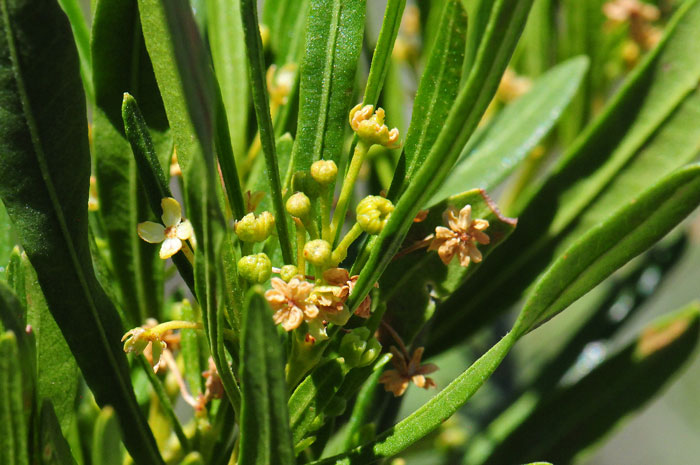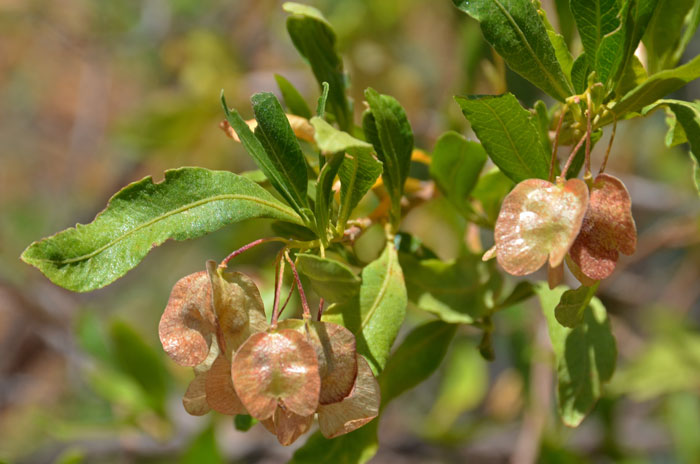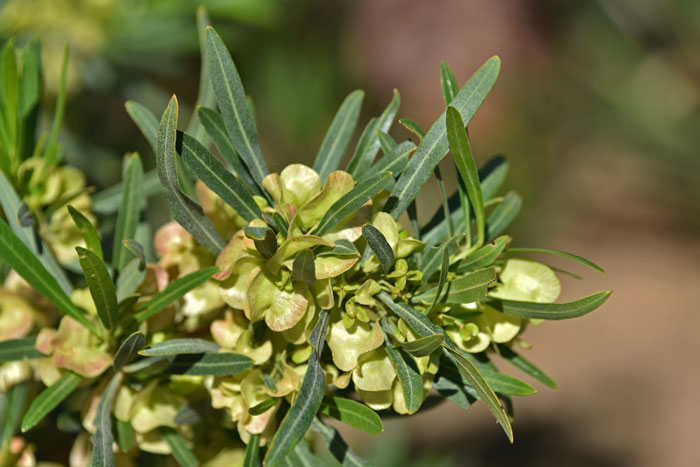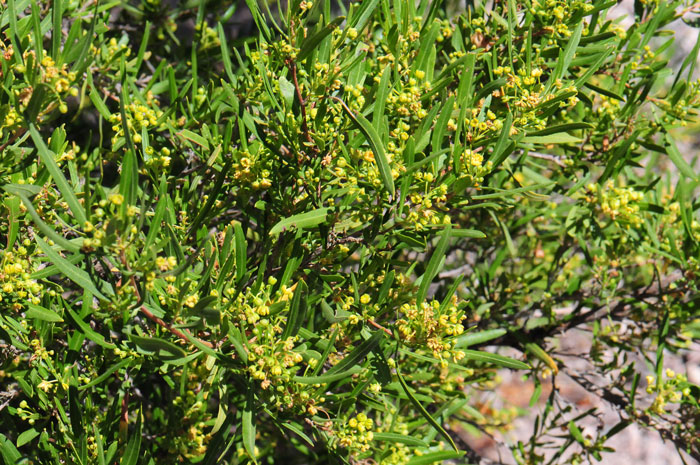Dodonaea viscosa, Florida Hopbush




Scientific Name: Dodonaea viscosa
Common Name: Florida Hopbush
Also Called: Florida Hopbush, Hopbush, Hopseed Bush, Switch Sorrel, Varnish Leaf, (Spanish: Jarilla, Tarachico, Tarachique, Saucillo, Alamillo)
Family: Sapindaceae Soapberry Family
Synonyms: (Dodonaea ehrenbergii, Dodonaea elaeagnoides, Dodonaea eriocarpa, Dodonaea eriocarpa x18 varieties, Dodonaea sandwicensis, Dodonaea sandwicensis var. latifolia, Dodonaea sandwicensis var. simulans, Dodonaea spathulata, Dodonaea stenoptera var. fauriei, Dodonaea thunbergiana, Dodonaea viscosa var. angustifolia, Dodonaea viscosa var. linearis, Dodonaea viscosa var. spathulata, Dodonaea stenoptera, Dodonaea viscosa var. arborescens, Ptelea viscosa)
Status: Native
Duration: Perennial
Size: Up to 12 feet.
Growth Form: Shrub, tree; plants dioecious.
Leaves: Green, shiny green; evergreen, alternate; narrowly lanceolate
Flower Color: Yellow, pale yellow or reddish; inflorescence a panicle from axils small flowers in clusters; fruit a 3 sided capsule.
Flowering Season: February to October; August to November in Florida.
Elevation: 2,000 to 5,000 feet.
Habitat Preferences: Common on dry rocky slopes and in canyons, often on limestone, grassy savannas, coastal hammocks. Often associated with Simmondsia and Fouquieria.
Recorded Range: Dodonaea viscosa is a relatively rare species in the United States where it is found scattered throughout Florida, central and southern Arizona and a small population is found in Orange County, California.
North America & US County Distribution Map for Dodonaea viscosa.
U.S. Weed Information: No information available.
Invasive/Noxious Weed Information: No information available.
Wetland Indicator: In North America Dodonaea viscosa, Florida Hopbush has the following wetland designations: Arid West, FACU; Atlantic and Gulf Coastal Plain, UPL; Western Mountains, Valleys, and Coast, UPL.
FACU = Facultative Upland, usually occur in non-wetlands, but may occur in wetlands
UPL = Obligate Upland, almost never occur in wetlands.
Threatened/Endangered Information: In North America Dodonaea elaeagnoides (=viscosa), Keys Hopbush is Endangered. Genus Information: In North America there is 1 native species in Dodonaea. World wide, The Plant List includes 67 accepted species names and includes a further 85 infraspecific rank for the genus.
In the Southwestern United States, Arizona and Texas have 1 species of Dodonaea, California, Nevada, New Mexico, Texas and Utah have 0 species. All data is approximate and subject to taxonomic changes.
There are 2 non-native subsp. in Dodonaea viscosa;
Dodonaea viscosa subsp. angustissima, Narrow-leaf Hopbush;
Dodonaea viscosa subsp. cuneata, Wedge-leaf Hopbush.
Comments: The handsome shiny green foliage, red winged fruits and drought resistance of Dodonaea viscosa make it an excellent accent landscape plant in the southwest. This semi-tropical species is readily available from local nurseries and several cultivars have been developed.
An infusion of the leaves of Dodonaea viscosa has been used as a wash for various purposes by North American indigenous peoples.
Hawaiian Drug, Ceremonial Medicine, Infusion of leaves and other plants used as a wash to keep evil influences away.
Hawaiian Drug, Dermatological Aid, Infusion of leaves and other plants used as a wash for rash and itch.
Hawaiian Drug, Misc. Disease Remedy, Infusion of leaves and other plants used as a wash for contagious diseases.
See ethno-botanical uses at Native American Ethnobotany, University of Michigan, Dearborn.

